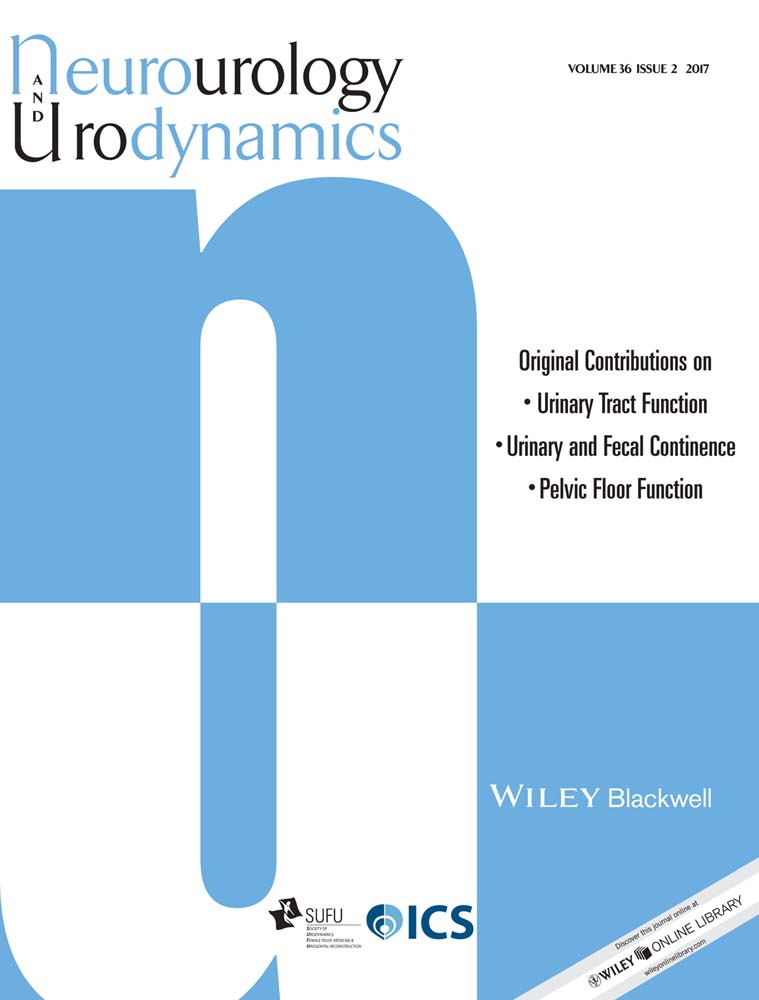Sensory function assessment of the human male lower urinary tract using current perception thresholds
Abstract
Aims
To evaluate the feasibility and reliability of current perception threshold (CPT) measurement for sensory assessment of distinct locations in the male lower urinary tract (LUT).
Methods
Twelve male subjects (>18 years) without LUT symptoms or medical comorbidities were eligible. CPTs were determined twice (interval: 7–20 days) at the bladder dome, trigone and the proximal, membranous, and distal urethra. Square wave electrical stimulation of 3 Hz/0.2 ms and 0.5 Hz/1 ms was applied using a transurethral 8F catheter placed under fluoroscopic control. Bladder volume was kept constant (60 mL) using a second 10F catheter. Repetitive measurements and reliability were assessed by analysis of variance (ANOVA) and intraclass correlation coefficient (ICC).
Results
The ANOVA revealed significant main effects for stimulation site (P = 0.008) and type of stimulation (P < 0.001) with lower CPTs for 0.5 Hz/1 ms compared to 3 Hz/0.2 ms. There was no significant effect for visit number (P = 0.061). CPTs were higher for bladder dome than for proximal (0.5 Hz/1 ms: P = 0.022; 3 Hz/0.2 ms: P = 0.022) and distal urethra (0.5 Hz/1 ms: P = 0.026; 3 Hz/0.2 ms: P = 0.030). Reliability of CPT measurements was excellent to good (ICC = 0.67–0.96) except for the bladder dome (5 Hz/1 ms: ICC = 0.45; 3 Hz/0.2 ms: ICC = 0.20) and distal urethra (3 Hz/0.2 ms: ICC = 0.57).
Conclusions
CPTs can be reliably detected at different LUT locations. However, alert and compliant subjects are essential. CPTs of LUT may become a complementary assessment method providing information on responsiveness and sensitivity of afferent LUT nerves. This is especially relevant for urethral afferents, which are not covered by standard urodynamic investigations. Neurourol. Urodynam. 36:469–473, 2017. © 2016 Wiley Periodicals, Inc.




